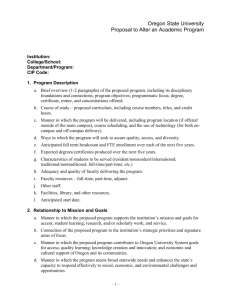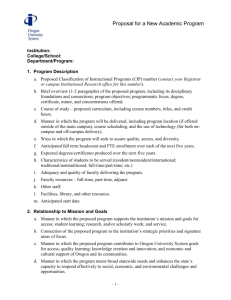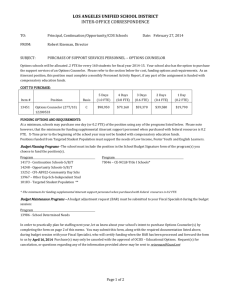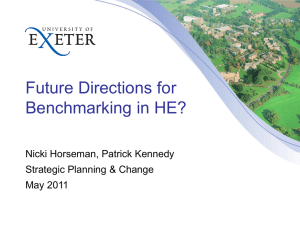1 Required Faculty Resources What qualifies as appropriate training
advertisement
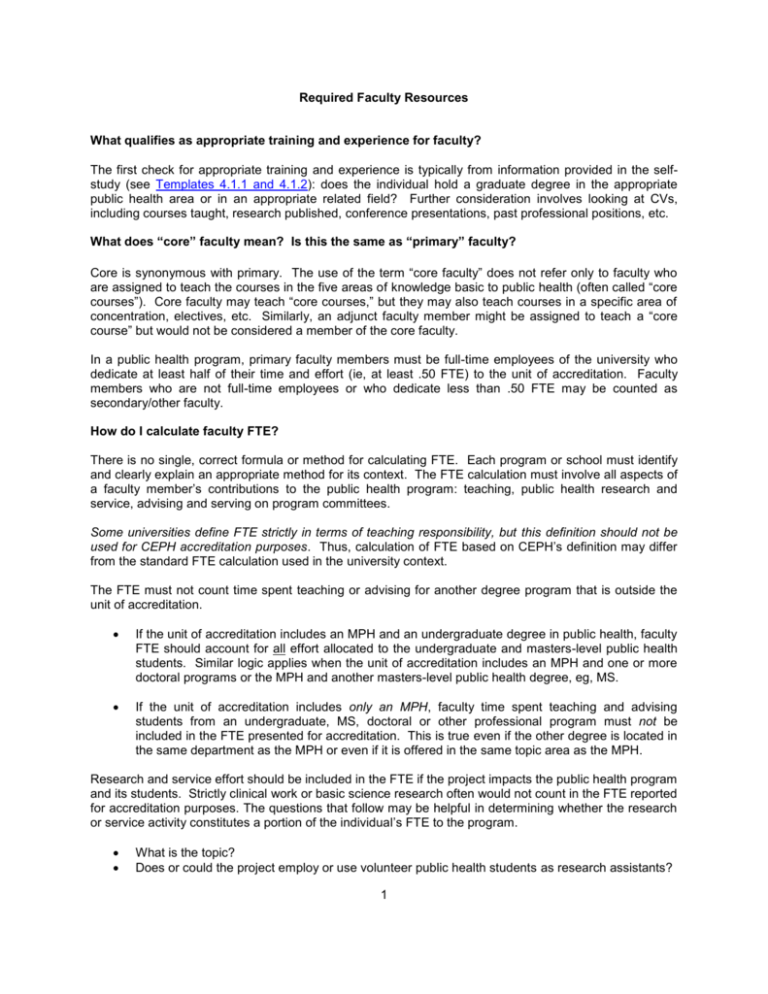
Required Faculty Resources What qualifies as appropriate training and experience for faculty? The first check for appropriate training and experience is typically from information provided in the selfstudy (see Templates 4.1.1 and 4.1.2): does the individual hold a graduate degree in the appropriate public health area or in an appropriate related field? Further consideration involves looking at CVs, including courses taught, research published, conference presentations, past professional positions, etc. What does “core” faculty mean? Is this the same as “primary” faculty? Core is synonymous with primary. The use of the term “core faculty” does not refer only to faculty who are assigned to teach the courses in the five areas of knowledge basic to public health (often called “core courses”). Core faculty may teach “core courses,” but they may also teach courses in a specific area of concentration, electives, etc. Similarly, an adjunct faculty member might be assigned to teach a “core course” but would not be considered a member of the core faculty. In a public health program, primary faculty members must be full-time employees of the university who dedicate at least half of their time and effort (ie, at least .50 FTE) to the unit of accreditation. Faculty members who are not full-time employees or who dedicate less than .50 FTE may be counted as secondary/other faculty. How do I calculate faculty FTE? There is no single, correct formula or method for calculating FTE. Each program or school must identify and clearly explain an appropriate method for its context. The FTE calculation must involve all aspects of a faculty member’s contributions to the public health program: teaching, public health research and service, advising and serving on program committees. Some universities define FTE strictly in terms of teaching responsibility, but this definition should not be used for CEPH accreditation purposes. Thus, calculation of FTE based on CEPH’s definition may differ from the standard FTE calculation used in the university context. The FTE must not count time spent teaching or advising for another degree program that is outside the unit of accreditation. If the unit of accreditation includes an MPH and an undergraduate degree in public health, faculty FTE should account for all effort allocated to the undergraduate and masters-level public health students. Similar logic applies when the unit of accreditation includes an MPH and one or more doctoral programs or the MPH and another masters-level public health degree, eg, MS. If the unit of accreditation includes only an MPH, faculty time spent teaching and advising students from an undergraduate, MS, doctoral or other professional program must not be included in the FTE presented for accreditation. This is true even if the other degree is located in the same department as the MPH or even if it is offered in the same topic area as the MPH. Research and service effort should be included in the FTE if the project impacts the public health program and its students. Strictly clinical work or basic science research often would not count in the FTE reported for accreditation purposes. The questions that follow may be helpful in determining whether the research or service activity constitutes a portion of the individual’s FTE to the program. What is the topic? Does or could the project employ or use volunteer public health students as research assistants? 1 Do examples from the project directly inform classroom teaching in public health and advising public health students? What is the minimum number of full-time, primary faculty required for an accredited school? Because of the array of required degrees that must be offered by all accredited schools, an accredited school that only offered the minimum curricular requirements would be required to have at least 21 fulltime, primary faculty plus four FTE. In collaborative schools, the lead institution must possess all of the faculty resources noted above (minimum of 21 primary faculty plus four FTE with appropriately arrayed training and experience). Beyond that, concentrations offered either at the lead institution or at partner institutions are evaluated based on institution-specific considerations, including the student-to-faculty ratio and the school’s mission, goals and objectives. What does the Council consider beyond minimum faculty resources when determining compliance? The minimum complement of required primary faculty is often not sufficient. Judging overall faculty resource adequacy is more nuanced. When the Council evaluates the overall adequacy of the faculty complement, the Council considers: The school or program’s mission, goals, objectives and competencies. Determination of adequate resources, beyond the minimum requirements, must be made in context. The student-faculty ratio (SFR). For graduate education, the SFR should typically be less than 10:1. The program’s mission and curriculum add context that may make a lower SRF necessary. Both the student headcount (HC) and the student FTE are significant. These data provide important context in terms of the “real resources” required. Programs and schools that enroll only full-time students may have different resource profiles than programs and schools that enroll many part-time students, though all must meet the minimum requirements. All faculty resources, not just primary faculty. Part-time and adjunct faculty, including communitybased practitioners, make important contributions to the program or school, though they cannot substitute for a group of primary faculty who meet the criteria outlined above. Full-time university faculty, including those from departments or colleges outside the program or school’s home, may also make important contributions to a program’s teaching, research, service and advisement, though their public health responsibilities constitute less than .50 of their FTE. Again, such faculty do not substitute for the required primary faculty, but reviewers consider the roles played by all faculty in accomplishing the mission. The organizational and geographic context. For example, a collaborative program or school with students attending at multiple sites may require more than the minimum faculty resources to ensure that students on all campuses have ready access to faculty. 2


